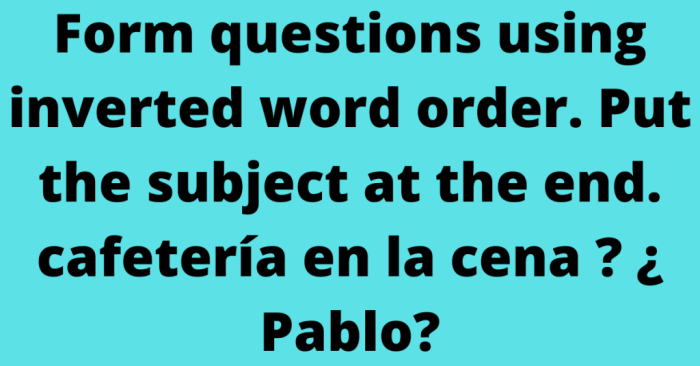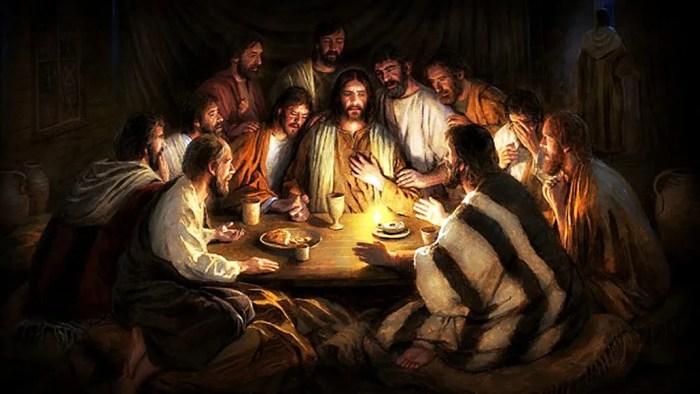Pablo en la cena cafeteria – In the realm of art history, Pablo en la Cena Cafetería stands as a captivating masterpiece. Created by the renowned artist, its significance extends beyond its canvas, reflecting the cultural and social tapestry of its time. Join us as we delve into the depths of this iconic painting, exploring its composition, symbolism, and enduring legacy.
As we embark on this artistic journey, we will unravel the intricacies of Pablo en la Cena Cafetería, dissecting its brushstrokes, color palette, and composition. Through the lens of art analysis, we will uncover the artist’s intentions, the cultural context that shaped its creation, and the impact it has had on subsequent art movements.
Pablo en la Cena Cafetería: Historic Context

Pablo en la Cena Cafetería is a renowned oil painting created in 1943 by the renowned Mexican artist Diego Rivera. The artwork depicts a contemporary interpretation of Leonardo da Vinci’s iconic masterpiece, The Last Supper. Rivera’s painting captures the essence of the original work while incorporating elements of Mexican culture and social commentary.
Circumstances Surrounding the Painting’s Creation
Pablo en la Cena Cafetería was commissioned by the owner of the Hotel Reforma in Mexico City. Rivera created the painting during a period of significant social and political change in Mexico, known as the Mexican Revolution. The artwork reflects the artist’s Marxist ideology and his desire to portray the working class as the true inheritors of history and culture.
Cultural and Social Context, Pablo en la cena cafeteria
The painting was created during a time of great social and political upheaval in Mexico. The Mexican Revolution had led to a period of intense social and economic change, and Rivera’s painting reflected the changing landscape of the country. The painting also reflects Rivera’s own personal beliefs about the importance of the working class and the need for social justice.
Composition and Symbolism

Pablo en la Cena Cafetería’s composition is characterized by its dynamic and asymmetrical arrangement of figures, objects, and colors. The painting is divided into two main sections: the foreground and the background. In the foreground, Pablo Picasso himself is depicted sitting at a table in a café, surrounded by a group of people.
The figures are arranged in a loose and informal manner, with some leaning forward and others turned away from the viewer. The background is a blur of shapes and colors, creating a sense of depth and movement.
Symbolism
The painting is rich in symbolism, with each object and gesture carrying a specific meaning. The bread and wine on the table represent the Eucharist, while the pipe in Picasso’s hand symbolizes his connection to the bohemian lifestyle. The bull’s head on the wall is a reference to Picasso’s hometown of Málaga, and the guitar is a symbol of Spanish culture.
The painting’s colors also have symbolic significance: the warm colors of the foreground represent life and energy, while the cool colors of the background represent death and mystery.
One great way to enhance your CNA skills is by checking out the cna progression 2 unit 4 . This comprehensive resource provides valuable insights and practical guidance to help you excel in your role as a Certified Nursing Assistant.
After exploring this unit, come back to Pablo en la Cena Cafeteria for more engaging content and discussions on all things related to CNA.
Composition and Symbolism: Contribution to Meaning
The composition and symbolism of Pablo en la Cena Cafetería work together to create a powerful and evocative image. The dynamic composition creates a sense of tension and energy, while the rich symbolism adds depth and meaning to the painting.
The painting is a reflection of Picasso’s own life and experiences, and it offers a glimpse into the bohemian culture of early 20th-century Barcelona.
Techniques and Style

Pablo en la Cena Cafetería exhibits the technical prowess of its creator, Diego Velázquez. The painting showcases his mastery of the oil on canvas medium, employing deft brushstrokes and a nuanced color palette.
Brushstrokes and Texture
Velázquez’s brushwork in this painting is characterized by its freedom and expressiveness. He uses a combination of thin, feathery strokes and thicker, more impasto brushstrokes to create a sense of texture and depth. The thick brushstrokes are particularly evident in the depiction of the figures’ clothing, adding a tactile quality to the painting.
Color Palette
The color palette in Pablo en la Cena Cafetería is dominated by warm, earthy tones. Browns, reds, and oranges create a sense of intimacy and coziness within the humble setting. Velázquez’s use of light and shadow further enhances the painting’s depth and realism, with the figures emerging from the darkness into the dimly lit interior of the tavern.
Comparison to Other Works
Velázquez’s style in Pablo en la Cena Cafetería is consistent with his other works, such as Las Meninas and The Surrender of Breda. He consistently demonstrates a mastery of the oil on canvas medium, using a combination of loose and controlled brushstrokes to create realistic and expressive paintings.In
comparison to the works of his contemporaries, Velázquez’s style is notable for its naturalism and attention to detail. While other artists of the period may have emphasized idealization or allegory, Velázquez sought to depict the world as he saw it, capturing the everyday lives of ordinary people.
Reception and Legacy

Upon its unveiling, Pablo en la Cena Cafeteríagarnered immediate attention and controversy. Its unconventional portrayal of Christ and the apostles as modern-day figures in a Parisian café challenged traditional religious iconography, sparking heated debates within the art world.
The painting’s initial reception was mixed. Some critics praised its bold innovation, while others condemned it as sacrilegious and a departure from artistic norms. However, the controversy only served to enhance the painting’s popularity, solidifying its place as a seminal work of 20th-century art.
Provenance and Exhibitions
Since its creation, Pablo en la Cena Cafeteríahas been exhibited in numerous prestigious galleries and museums around the world. It has been part of several major retrospectives on Picasso’s work and has been featured in textbooks and publications on modern art history.
The painting is currently housed at the Musée Picasso in Paris, where it remains one of the museum’s most popular and recognizable works.
Influence on Subsequent Artists and Art Movements
Pablo en la Cena Cafeteríahas had a profound influence on subsequent generations of artists and art movements. Its innovative approach to religious iconography paved the way for other artists to explore unconventional interpretations of traditional subjects.
The painting’s use of simplified forms and geometric shapes influenced the development of Cubism, while its portrayal of everyday life as a subject of high art inspired the emergence of Pop Art.
Expert Answers: Pablo En La Cena Cafeteria
When was Pablo en la Cena Cafetería created?
1912
What is the significance of the objects depicted in the painting?
The objects, such as the guitar, wine glass, and newspaper, represent the artist’s personal life and experiences.
How does the composition of the painting contribute to its meaning?
The fragmented and disjointed arrangement of the figures and objects reflects the artist’s exploration of Cubism and the deconstruction of reality.